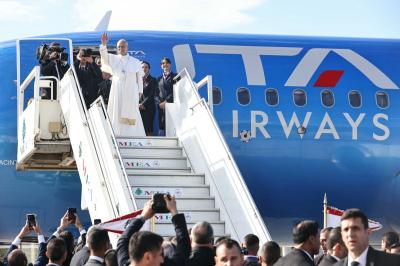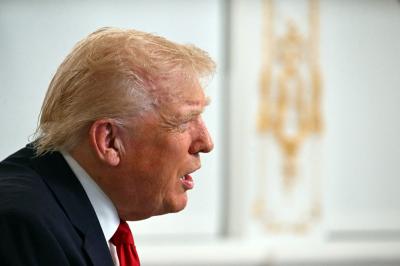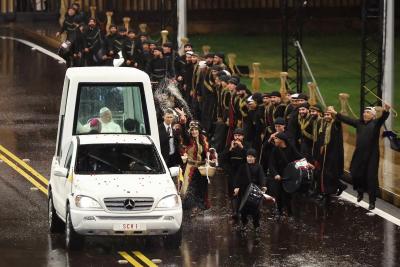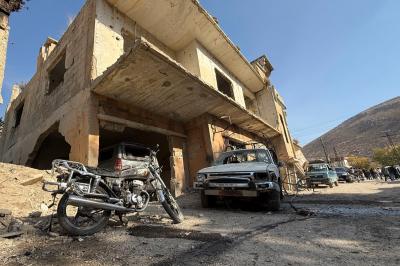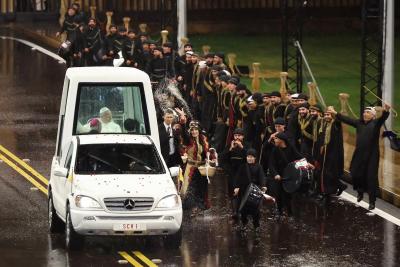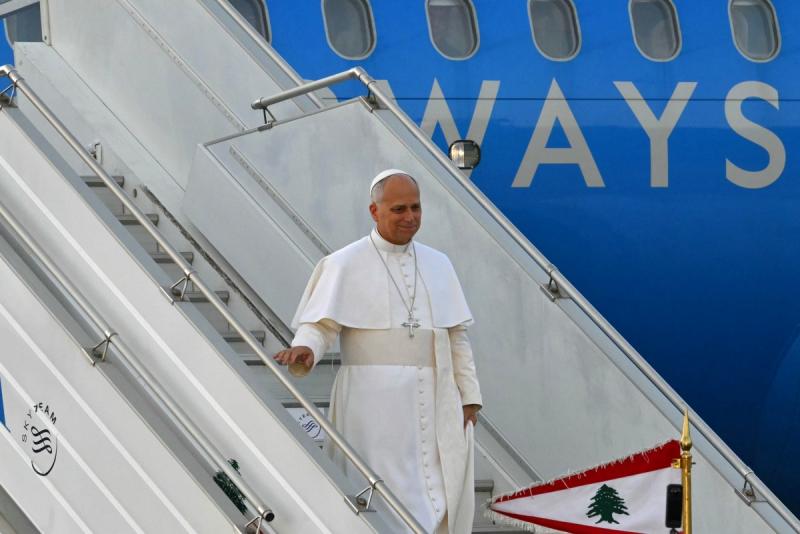The five words “Lebanon’s peace with its neighbors,” spoken by U.S. President Donald Trump in Riyadh, may very well summarize the trajectory being drawn for Lebanon’s future within the framework of “stability and prosperity”—a dual objective around which both Arab and international wills have aligned, led by the historic partnership between the United States and Saudi Arabia.
In this broad and decisive shift toward peace as a solution to the Middle East’s crises and conflicts, the old and often-repeated adage that “Lebanon will be the last to normalize and sign” loses meaning and relevance. The region as a whole, including Iran, appears to be moving confidently toward a new era—one that turns the page on wars and bloodshed, both within and between states.
Early signs of this major shift have already begun to emerge, at least through two indicators: the containment of the Houthi threat in the Red Sea and Bab al-Mandab strait—an outcome of both Iranian decision-making and American military pressure—and the divergence between Trump’s agenda and Israeli Prime Minister Netanyahu’s multi-front, increasingly complex military plans.
This divergence was anticipated both before and after Trump’s return to the White House. The U.S. administration cannot accommodate Netanyahu’s militaristic ambitions which threaten Trump’s stated strategy of ending regional and international wars while expanding the Abraham Accords.
It is no small detail that Washington recently lifted sanctions on Syria at the request of Saudi Crown Prince Mohammed bin Salman, coinciding with a meeting between Trump and Syrian President Ahmad al-Sharaa and the U.S.-Gulf summit. This suggests a clear effort to restrain Israeli pressure on Syria’s new leadership.
What’s evident is that the upcoming Abraham Accords—expected to eventually include Saudi Arabia (on its timetable) and Syria—will not be forged on Netanyahu’s terms alone, or those of any successor. Arab conditions will matter, particularly the establishment of a Palestinian state following a restructuring of the Palestinian Authority and the closing of Hamas’ military chapter. This was a foreseeable outcome after the outbreak of the Palestinian “Al-Aqsa Flood” operation and its Lebanese counterpart, “Support,” which we’ve long argued would open a window for resolution once both warring sides are exhausted.
In this context, “Lebanon’s peace with its neighbors” becomes a key piece in the broader puzzle of regional agreements. It is unthinkable that Damascus and Tel Aviv could reach practical and political understandings under U.S.-Saudi sponsorship while Lebanon remains excluded, especially given its position as the third side of the triangle linking the two. The question is no longer who normalizes first, but rather who is present at the table to secure their rights and delineate borders with neighbors, whether from Naqoura to the Shebaa Farms, the slopes of Mount Hermon, the eastern mountain range, or the northern frontier.
This is where the challenge arises for Hezbollah: to avoid isolation from this unfolding context. Even Iran is now engaging with the process, entering talks with Washington and curbing its Houthi proxy, following similar moves in Iraq. Notably, Hezbollah’s rhetoric has already begun to soften. The recent speech by the group’s deputy leader, Sheikh Naim Qassem, no longer included threats to “cut off the hand that reaches for our weapons.” Instead, it emphasized “partnership with the regime and state-building.”
Such a “partnership with the regime” necessarily implies a commitment to the state’s monopoly on arms, no longer sustaining the coexistence of dual military powers. Building state institutions means dismantling all illegal and parallel institutions—military, security, or financial. This outcome is unavoidable on the road to irreversible peace, particularly after the failure of wartime alliances and the crumbling of the “Axis of Resistance” and “Unity of Fronts” models.
There’s no doubt Hezbollah—and the Shiite community that supports it—have a vested interest in peace with a new Syria, one moving toward agreements with Israel under U.S., Gulf, and even Turkish momentum, and with Iran’s consent. Political realism is asserting itself across all components of Lebanese society.
Naturally, this process is fraught with conditions and obstacles and won’t happen overnight. Yet it realistically represents the region’s destiny and future. It’s the product of understanding the facts on the ground and adopting the logic of what’s possible, rather than clinging to the illusion of the impossible, regardless of whether or not the geopolitical maps drawn by Sykes-Picot change.
It is not surprising that Iranian pragmatism is beginning to take precedence over the imperial project that has burdened Tehran for 46 years. Iran, too, is buckling under the weight of military, political, and economic failures. It is now seeking to mitigate losses, ease sanctions, and reduce pressure. It has an interest in embracing the “stability and prosperity” doctrine—an interest that must soon be mirrored by its Lebanese proxy, who must come under the authority of the state, according to its legitimate conditions, not through “armed partnership.”
Please post your comments on:
[email protected]
 Politics
Politics
